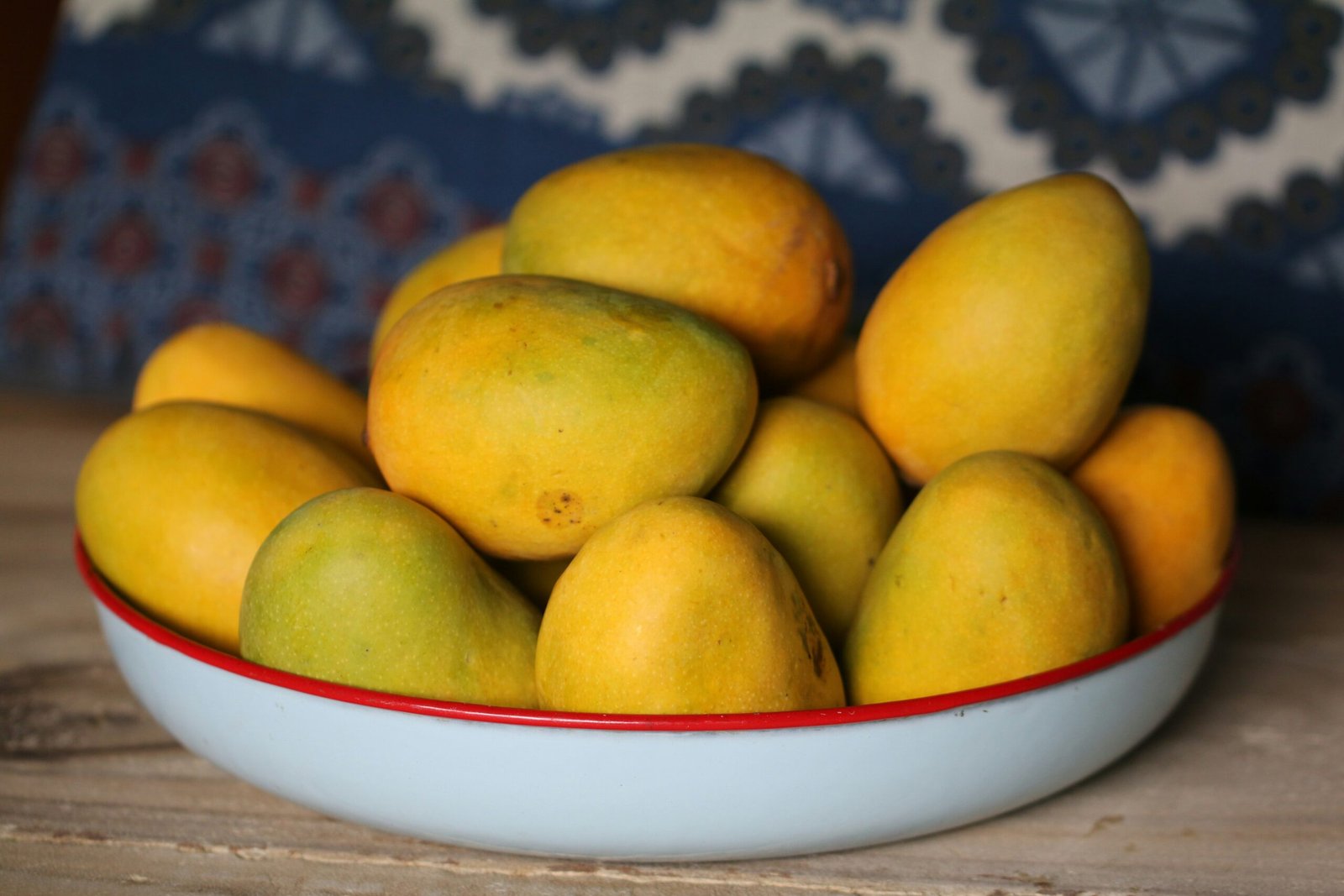
Mangoes, often called the “King of Fruits,” have delighted taste buds for centuries with their tropical sweetness. With over 500 varieties available worldwide, each mango species offers its own unique flavor, texture, and aroma. Rich in essential vitamins like A, C, and E, mangoes not only taste great but also provide important nutrients. Whether you prefer sweet and creamy types or a tangier bite, there’s a mango variety for every palate. In this article, we’ll explore some of the most popular types of mangoes, highlighting what makes each unique and how they can enhance various culinary dishes.
1. Alphonso Mango (Hapus)
The Alphonso mango, or Hapus, stands out as one of the most loved varieties. Grown primarily in the Ratnagiri region of India, this mango is prized for its creamy texture and sweet, aromatic flavor. The vibrant orange flesh is fiberless, making it perfect for desserts, smoothies, or simply enjoying fresh. Often referred to as the “King of Mangoes,” Alphonso mangoes are not only delicious but also rich in vitamins and antioxidants.
Order Now: Ratnagiri Alphonso Mango
- Best for: Desserts, Aamras, Smoothies, Mango Lassi
- Fun Fact: Alphonso mangoes are frequently chosen for corporate gifts during festivals like Akashya Tritiya & Gudi Padwa.
2. Tommy Atkins Mango
The Tommy Atkins mango is one of the most accessible varieties worldwide due to its durability and long shelf life. It has a mild, slightly tart flavor with a firm texture, making it less sweet than other varieties. Its colorful skin—usually a mix of green, orange, and red—makes it visually appealing. While its flavor isn’t as intense, the Tommy Atkins mango’s sturdiness makes it ideal for salads, salsas, and chutneys.
Order Now: Tommy Atkins Mango
- Best for: Salads, Salsas, Chutneys
- Fun Fact: This variety is commonly used in pre-packaged mango chunks due to its durability.
3. Kent Mango
The Kent mango is known for its juicy, tender flesh and sweet, tropical flavor with hints of citrus. With minimal fibers, it’s ideal for blending into smoothies or enjoying fresh. When ripe, the Kent mango typically has green skin with a red blush. It’s usually available in the winter and spring months, making it a favorite during the cooler seasons.
- Best for: Smoothies, Fruit Salads, Yogurt Bowls
- Fun Fact: Its non-fibrous texture makes it highly favored for making mango puree.
4. Keitt Mango
The Keitt mango, a large variety, stands out due to its smooth, fiberless flesh and tangy-sweet taste. Even when fully ripe, its skin remains green, which sets it apart from most other mangoes. Popular in both sweet and savory dishes, the Keitt mango features prominently in Asian cuisine, from salads to grilled dishes.
Order Now: Keitt Mango
- Best for: Desserts, Jams, Grilled Dishes
- Fun Fact: The Keitt mango is a late-season variety, harvested between August and September.
5. Ataulfo Mango (Honey or Champagne Mango)
The Ataulfo mango, also known as the Honey or Champagne mango, is small, kidney-shaped, and covered in smooth yellow skin. Its buttery, sweet flavor and velvety texture make it ideal for fresh consumption or for use in smoothies and sorbets. Because it contains fewer fibers than other varieties, it delivers a creamy, almost melt-in-your-mouth experience.
Order Now: Ataulfo Mango
- Best for: Smoothies, Sorbets, Fresh Eating
- Fun Fact: The Ataulfo mango is a favorite export from Mexico and is commonly found in U.S. and European markets.
6. Haden Mango
The Haden mango, one of the earliest mango varieties to be grown in Florida, has a sweet, tangy flavor. With a slightly fibrous texture, this variety is great for salsas, chutneys, and as a topping for tacos. Its skin, which turns red with green undertones when ripe, makes it visually appealing as well.
Order Now: Haden Mango
- Best for: Salsas, Chutneys, Tacos
- Fun Fact: The Haden mango is the “parent” variety for several others, including Kent and Tommy Atkins.
Why Mango Varieties Matter
Each type of mango offers its own distinct flavor, making them versatile in the kitchen. Whether you’re preparing a refreshing mango lassi, a sweet sorbet, or a tangy chutney, selecting the right mango variety can elevate your dish. Mangoes are packed with nutrients and antioxidants, making them an excellent choice for those seeking a healthy, sweet addition to their meals.
Mangoes also carry significant cultural importance, particularly in India, where Alphonso mangoes are highly regarded. During festivals such as Ganesh Chaturthi, these mangoes are commonly given as gifts or offered in religious ceremonies.
Next time you shop for mangoes, try a new variety to expand your palate and enjoy the diverse flavors of this tropical fruit.
Where to Find the Best Mango Varieties
Looking for top-quality Alphonso mangoes or other premium varieties? Explore the Ratnagiri Hapus Store, where you can purchase premium Alphonso mangoes straight from the finest farms. Enjoy the unmatched quality and taste that makes these mangoes beloved across the globe.
- Order Premium Alphonso Mangoes: Ratnagiri Hapus Store







